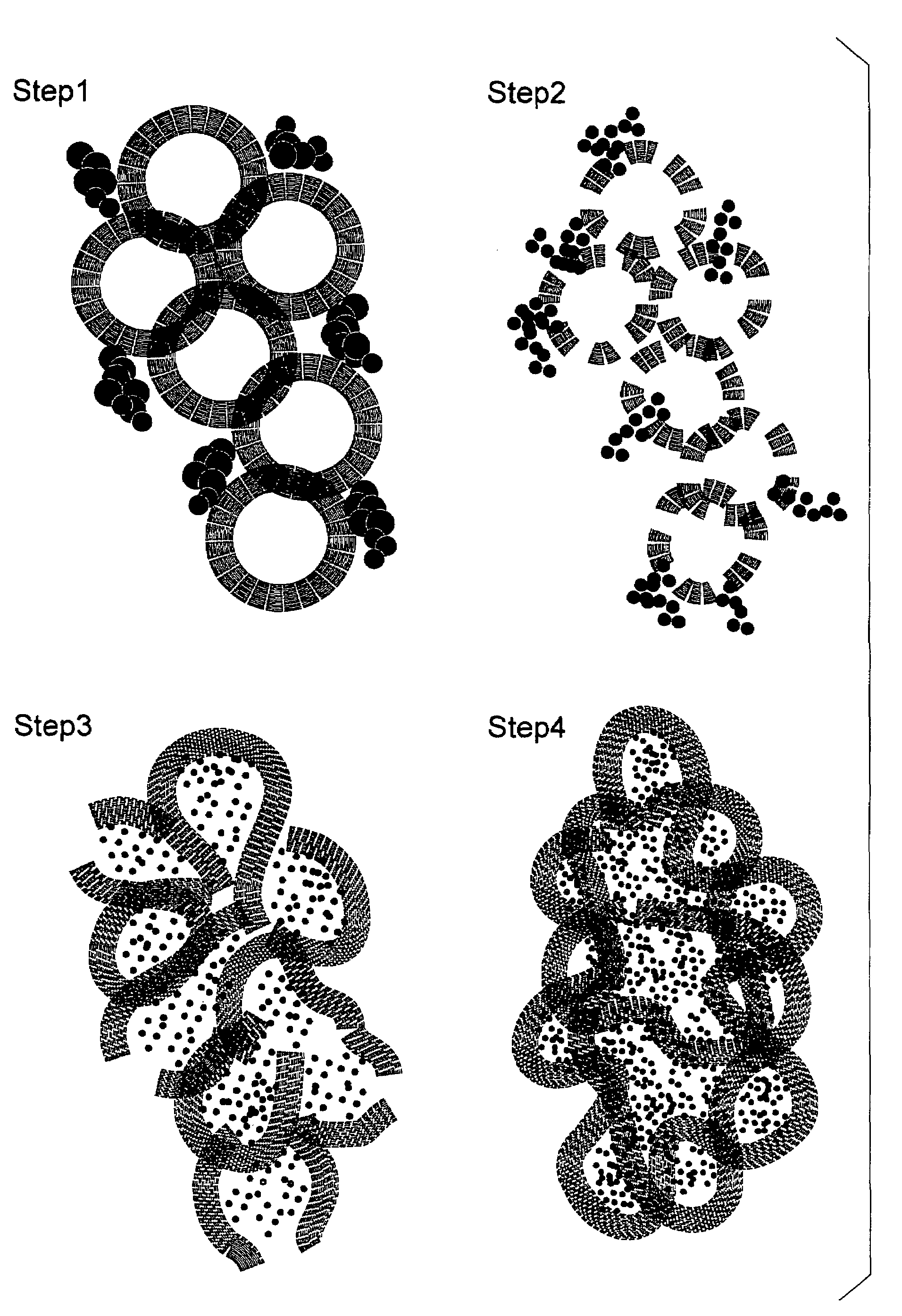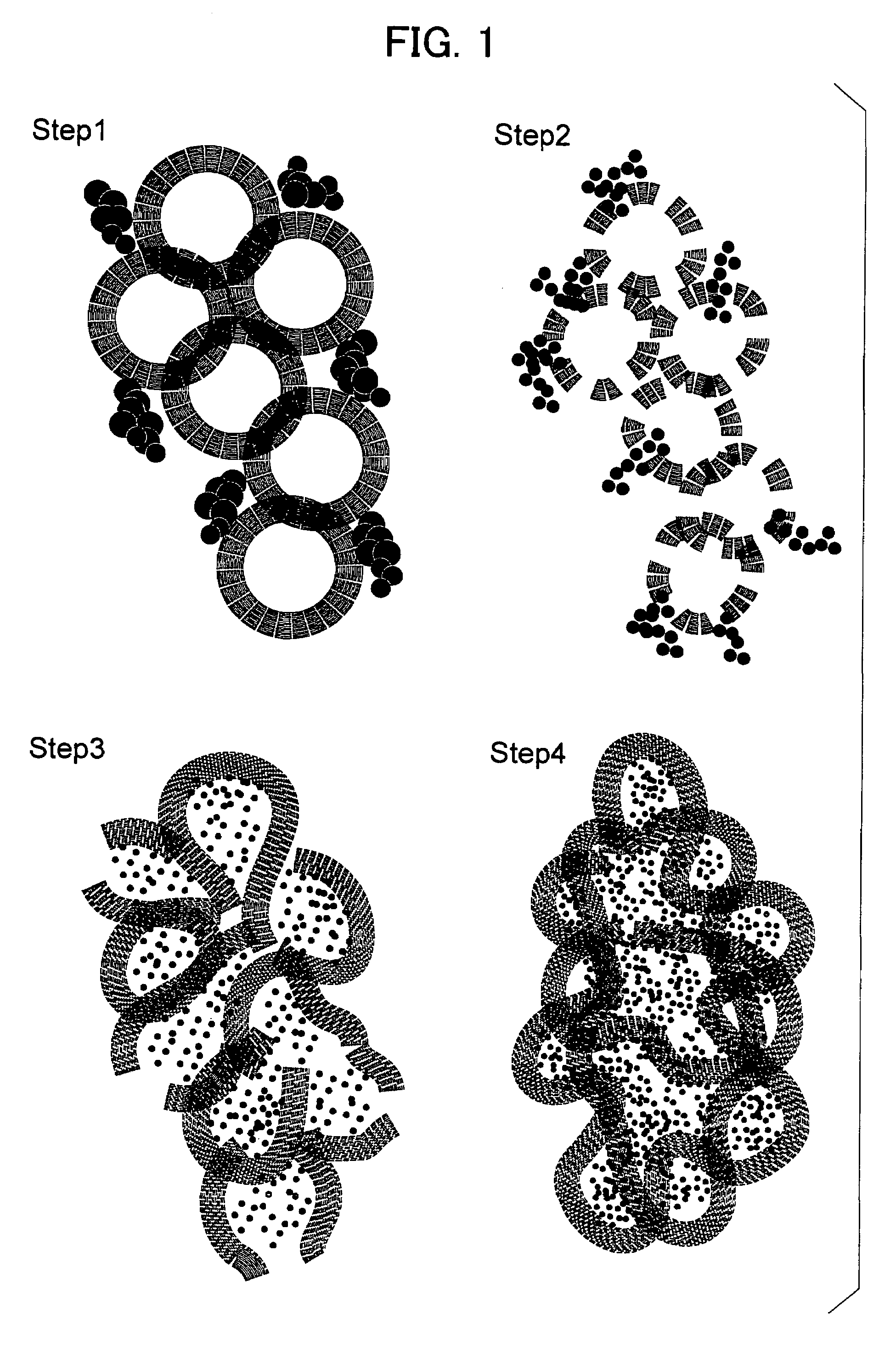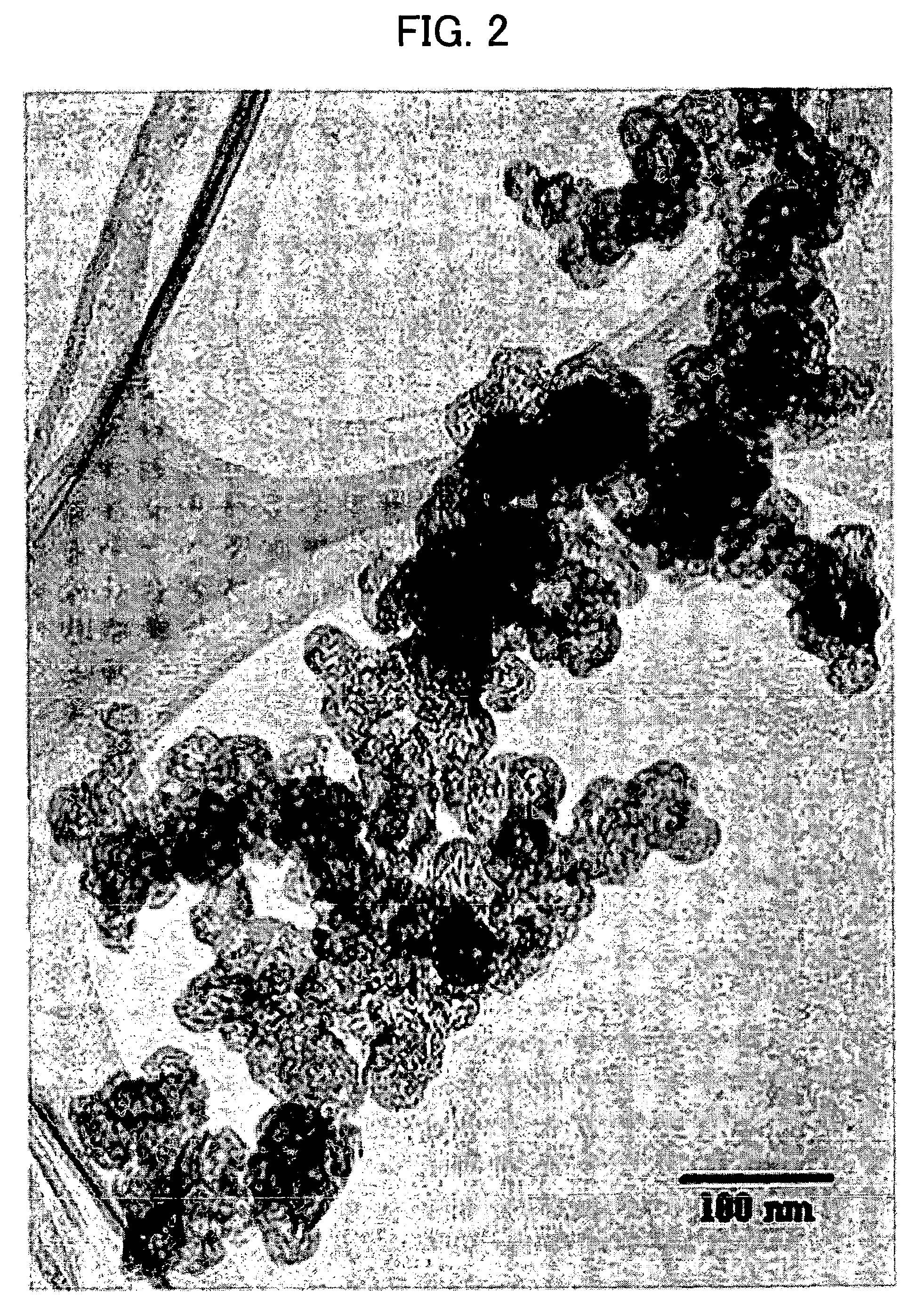Nanocarbon composite structure having ruthenium oxide trapped therein
a carbon nanocomposites and composite structure technology, applied in the field of new materials, can solve the problems of low capacitance per weight of materials, high cost, and inability to meet the requirements of use, and achieve the effect of higher capacitance and higher electrochemical activity
- Summary
- Abstract
- Description
- Claims
- Application Information
AI Technical Summary
Benefits of technology
Problems solved by technology
Method used
Image
Examples
example 1
[0045]The above-described hollow nano-carbon (Ketjen black, produced by Ketjen Black International Co., trade name: Ketjen Black EC600JD, porosity of 78% by volume, primary particle size of 40 nm, and an average secondary particle size of 337.8 nm) was highly dispersed within the centrifugal device, to which 10 mM of aqueous ruthenium chloride solution was added and then highly dispersed successively to prepare a precursor, in which the ruthenium chloride was absorbed inside and outside of the hollow nano-carbon. To this, 30 mM of aqueous sodium hydroxide solution was added to adjust the pH to 7, and the mixture was centrifuged at a centrifugal force of 75,000 G for 10 minutes to progress a surface sol-gel reaction, thereby to obtain a ruthenium oxide encapsulating nano-carbon composite structure.
[0046]The resulting ruthenium oxide encapsulated carbon nano-composite structure was filtered using an aspirator, a filtering flask and a filter holder, and dried at 100° C. for 6 hours, th...
example 2
[0048]A powder of ruthenium oxide encapsulating nano-carbon composite structure was prepared in a similar manner as Example 1, except that the centrifugal processing period was 20 minutes in the surface sol-gel reaction (Sample B). FIG. 4 shows a TEM image of Sample B.
[0049]From FIG. 4, it is found that a hollow nano-carbon having a primary particle size of about 20 nm forms agglomerates, and the secondary particle size is about 200 to 300 nm. It can also be understood that the ruthenium oxide nanodots (average diameter of 1 nm), incorporated into the hollow nano-carbon, agglomerate more significantly than those of Sample A and represent distorted shapes due to the fact that the graphene layer, forming the primary particles of the hollow nano-carbon, has been fractured once and rearranged.
Measurement and Evaluation
[0050]The resulting samples in Example 1 (Sample A) and Example 2 (Sample B) were measured with respect to the average particle size of the primary particles, the average ...
example 3
[0057]A powder of ruthenium oxide encapsulating nano-carbon composite structure was prepared in a similar manner as Example 1, except that the centrifugal processing was carried out at 45,000 G for 10 minutes (Sample C). The resulting sample C was evaluated in a similar manner as Samples A and B. Consequently, the average secondary particle size was 380 nm, average particle size of the primary particles was 30 nm, and the average particle size of ruthenium oxide particles was 10 nm. The specific capacitance was 300 F / g.
PUM
| Property | Measurement | Unit |
|---|---|---|
| nano-particle size | aaaaa | aaaaa |
| hydration number | aaaaa | aaaaa |
| diameter | aaaaa | aaaaa |
Abstract
Description
Claims
Application Information
 Login to View More
Login to View More - R&D
- Intellectual Property
- Life Sciences
- Materials
- Tech Scout
- Unparalleled Data Quality
- Higher Quality Content
- 60% Fewer Hallucinations
Browse by: Latest US Patents, China's latest patents, Technical Efficacy Thesaurus, Application Domain, Technology Topic, Popular Technical Reports.
© 2025 PatSnap. All rights reserved.Legal|Privacy policy|Modern Slavery Act Transparency Statement|Sitemap|About US| Contact US: help@patsnap.com



